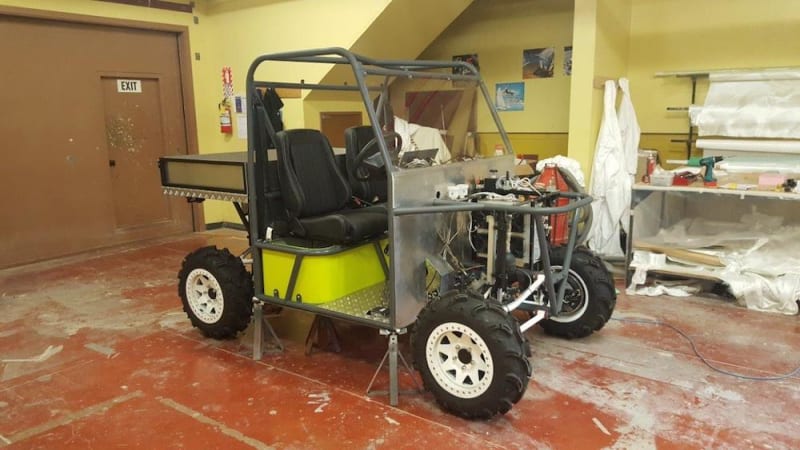UniQuad - Hydrogen Electric Agricultural Utility Vehicle.
Design of a safer, renewable energy utility vehicle for the rural sector.
What problem does your design idea solve?
Agriculture is second only to forestry in the number of workplace fatalities each year, with farm vehicles in general and Quad Bikes in particular proving problematic. Four-wheeled motorbikes, commonly known as Quad Bikes or All-Terrain Vehicles (ATV’s) have a long history of use in the New Zealand agriculture sector. Currently there are approximately 100,000 Quad Bikes in use. Researchers estimate that 35 farmers come off their Quad Bikes every day; nine of them are hurt badly enough to take time off work to recover and approximately 850 people are injured every year. The average hospital stay for Quad Bike accident victims is about seven days at a cost of $19,500. Quad Bike accidents cost $10 million in ACC claims per year. Workplace fatalities from Quad Bikes average five per year, or approximately 28 percent of all work related farm deaths. Quad Bikes ability for use on a range of terrains means that they are often exposed to high rollover risk due, in part, to steep gradients and rough terrain, as well as, in some cases, inappropriate towing or overloading. I have addressed these concerns by designing a safer utility vehicle, better suited to New Zealand’s agriculture environment and applications.
What are the potential benefits?
• Preventing and reducing injuries and fatalities.
• Saving time and money, reducing pressure on hospitals and emergency services.
• Offering alternative energy solutions and improving quality of life
How is your idea novel or an improvement on what is currently available in the marketplace?
The vehicle is a new bespoke design, enhanced with modern technologies. The vehicle has a passenger safety cell designed to withstand 6G collisions and active self-levelling suspension that can prevent vehicle roll-overs. Powered by a hydrogen fuel cell, the vehicle is driven by four electric hub motors which are managed using torque vector control and allow zero radius turning. Furthermore, enhanced with bidirectional 4G GMS network and autonomous diving capabilities.
Where would this idea be applied?
Agriculture, Forestry, Mining, Expiration, Recreation. Anywhere a better suited off-road vehicle is not available.
What is the market potential?
100,000+ unit for NZ alone, potentially 100M+ units globally.
How does your design work?
Sorry I would require an NDA signed before I disclose that to protect my IP.
How would your product be manufactured?
Conventional methods, welded steel frame, composite fibre reinforced plastics etc.
How would the production cost compare with products already in the marketplace?
Currently the mass production cost is twice to four times that of a conventional Quad Bike. However, in 5 years’ time the cost of hydrogen fuel cells will drop allowing us to compete with current vehicles.
Video
Like this entry?
-
About the Entrant
- Name:Simon Hartley
- Type of entry:individual
- Software used for this entry:Solidworks, Suspension sim, Metlab
- Patent status:none








